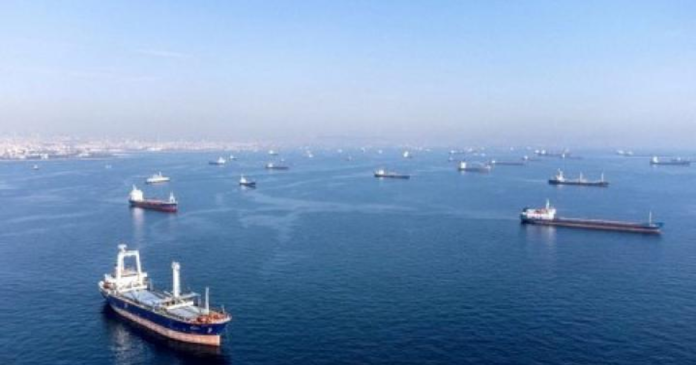The Black Sea grain agreement, which permits Ukraine to export grain via the Black Sea, will expire at the end of Monday as a result of Russia’s announcement that it will stop taking part.
What is the Black Sea grain deal: The agreement, mediated by the UN and Turkey in July of last year, sought to ease a worldwide food crisis by enabling the transfer of grain from Ukraine that had been prevented by the conflict between Russia and Ukraine.
WHY DOES IT MATTER?
Due to the halting of its exports at the start of the war, Ukraine—a major producer of grains and oilseeds—caused food prices to reach all-time highs. The agreement, made in July 2022, some five months after the conflict began, helped to lower prices and alleviate a food crisis around the world.
With 725,200 tonnes, or 2.2%, of the supplies delivered through the corridor utilised by the World Food Programme (WFP) to deliver help to nations like Ethiopia, Somalia, and Yemen, Ukraine grain has also had a direct impact.
WHAT MEANS THIS FOR FOOD PRICE RANGES?
Already, prices for grains and oilseeds have increased in response to the news that Russia will stop taking part in the agreement. In the upcoming months, the hike will result in increased pricing for basic items like bread and spaghetti.
However, thanks to improved supply of grain from other suppliers like Brazil and Brazil, the situation is better than it was in the early months of the war.
Wheat, the primary component of bread, has seen its price decline by around 14% so far this year, while maize has seen a price decline of nearly 23%.
But the current global food crisis is far from being resolved. The WFP reported last month that a number of crises had coincided, resulting in the greatest and most complicated humanitarian and hunger catastrophe in more than 70 years.
According to a WFP yearly analysis, 349 million people suffered acute hunger in 2022, and 772,000 were on the verge of becoming hungry.
HOW ARE GLOBAL FOOD SUPPLIES DOING?
The world’s maize reserves started the 2021/22 season at a six-year low, thus Russia’s invasion of Ukraine, one of the top exporters of maize, resulted in a sharp increase in prices.
However, a dramatic rise in Brazilian exports, together with the passage of over 17 million tonnes of maize via the corridor, has since contributed to a boost in supply.
By the end of the 2023–2024 growing season, the U.S. Department of Agriculture predicts that world maize stockpiles will be at a five-year high.
According to USDA data, global wheat inventories are getting smaller and are expected to reach an eight-year low at the end of the 2023–24 growing season.
FOR THE WORLD FOOD PROGRAMME, WHAT WOULD IT MEAN?
Each year, the WFP purchases several million tonnes of food products, with grains making up around 75% of those purchases.
Ukraine was the biggest source for the WFP in 2021, contributing 20% of the total to its purchases, which totaled 4.4 million tonnes.
Wheat and split peas are the principal exports from Ukraine.
The WFP typically sources the majority of its supplies from eastern Europe, which is closer than major producers in North or South America, as the majority of the food flows to Africa and several nations in Western Asia, like Yemen.
725,200 metric tonnes have been transported along the corridor by the WFP. After being forced to scale back operations in some nations due to a financial shortfall, it will have to search abroad, possibly at a higher cost.
WHO OR WHAT HAS EXPORTED?
Ukraine has been able to export 32.9 million tonnes of agricultural goods under the agreement to establish a secure shipping route, including 16.9 million tonnes of maize and 8.9 million tonnes of wheat.
Prior to the conflict, Ukraine exported between 16 and 21 million tonnes of wheat and between 25 and 30 million tonnes of maize annually, primarily via the Black Sea.
Only three ports are included in the agreement, which restricts the amount of grain that can be transported through the Black Sea.
For a complete breakdown of the nations and export amounts:
WHY IS RUSSIA LEAVING THE CONTRACT?
Russia has frequently stated that it does not see any justification for continuing the agreement. It claims that promises made to reduce barriers to Russian exports of food and fertiliser have not been kept.
Reconnecting Russian Agricultural Bank (Rosselkhozbank) to the SWIFT payment system is one of Moscow’s demands.
The restart of the Togliatti-Odesa ammonia pipeline, the relaxation of restrictions on insurance and reinsurance, the unblocking of the assets and accounts of Russian firms engaged in the export of food and fertiliser are among the other requests.
CAN THE CORRIDOR BE USED IN THE ABSENCE OF RUSSIA?
Up until the agreement was signed in July of last year, Ukraine’s ports remained closed, and it is uncertain if grain shipping will be allowed now that Russia is leaving the arrangement.
Shipowners would be reluctant to allow their vessels to enter a war zone without Russia’s consent due to increased war risk insurance rates that are imposed when entering the Black Sea region.
According to insiders in the insurance sector, cover arrangements can change suddenly. Every seven days, war risk insurance covers for ships must be renewed, which costs thousands of dollars.
DO THE UKRAINE’S HARVESTS REQUIRE THE CORRIDOR IF THEY DECLINE?
Grain exports from Ukraine are expected to decrease in the 2023–2024 harvest because fewer farmers planted maize and wheat as a result of the conflict.
According to the U.S. Department of Agriculture, maize exports would fall to 19.5 million tonnes from the previous season’s 28 million, which was a significant decrease from the record 30.3 million tonnes delivered during the 2018–19 season, when they made up 17% of the world’s commerce.
In contrast to the previous season’s 16.8 million tonnes, which constituted 11% of global trade, exports of wheat are predicted to drop to 10.5 million tonnes in 2019.
However, exporting even such smaller amounts of grain through the eastern European Union would be logistically challenging and expensive, especially for crops cultivated in eastern Ukraine where they must travel a long way just to get to the border.
WILL UKRAINE BE ABLE TO EXPORT MORE GRAIN THROUGH THE EU?
Since the start of the crisis, Ukraine has been exporting significant amounts of grain through eastern EU nations. However, there have been other practical difficulties, such as disparate rail gauges.
Another problem is that farmers in the area complain that the influx of grain from Ukraine through the eastern EU has undermined local supply and been bought by mills, leaving them without a market for their products.
In order to prevent domestic sales of Ukrainian wheat, maize, rapeseed, and sunflower seeds, the EU has granted permission to five nations: Bulgaria, Hungary, Poland, Romania, and Slovakia, while allowing transit for export to other countries. Currently, this will be phased away by the middle of September.
This summer, larger harvests are anticipated throughout the eastern EU, and important ports like Constanta, Romania, are predicted to struggle with the quantities of grain they are projected to receive, causing congestion and shipping delays.

